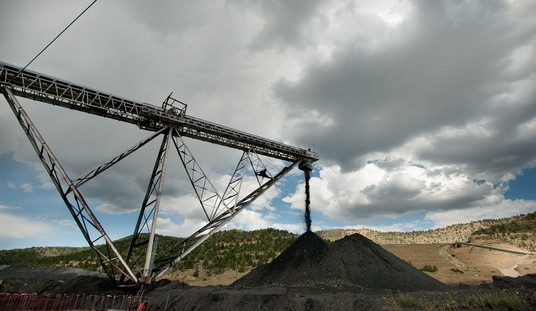As a college senior in 1986, I vividly remember the Wall Street investment banks coming for on-campus recruiting. The purpose of their visits was to advertise their “investment banking analyst program,” which was really a two-year stint of indentured servitude but, on the other hand, almost guaranteed admission to a top five American business school. Typically, the Wall Street firms would send employees back to their alma maters to hype the glamour and challenge of working on “the Street.”
I remember seeing recent grads, who previously had dressed like the rest of us on campus, transformed into veritable “Masters of the Universe,” clothed in smart Brooks Brothers suits, clad with French cuffs, and heeled in Johnson and Murphy wingtips. Wow, these guys seemed pretty impressive! Yet, the two things that I remember most from that time were the terms “bulge bracket firm” and the “Glass-Steagall Act,” both of which I had not the faintest idea what they meant.
The first term was pretty straightforward. “Bulge bracket firm” meant that an investment bank was one of the top five or so on Wall Street that commanded a lion’s share of underwriting activity of securities (back then just stocks and bonds) and enjoyed a diverse and deep-pocketed client base of institutions and individuals to sell securities. The other term was a little harder to understand. As the investment bankers explained to us, following the stock market crash of 1929, the Glass-Steagall Act mandated that financial institutions be split into their underlying businesses.
For example, the storied JP Morgan & Co became a pure commercial bank and had to divest is investment bank, which was renamed Morgan Stanley & Co. This distinction did not seem to be all that important to me at the time, but clearly I had no clue.
But a few weeks later, when the Morgan Guarantee Trust Company folks came to visit campus (JP Morgan merged with Guarantee Trust in 1959), and they appeared to lack the swagger of their investment banking counterparts. These commercial bankers seemed to be much more serious and very much annoyed that they could not engage in the more profitable activities of underwriting securities and providing merger and acquisition advice.
In the end, I managed to obtain a job at PaineWebber, which was not one of the bulge bracket firms of the day, but then went on to business school and afterward, managed to land a job with the trading powerhouse of Salomon Brothers in Tokyo. Japan was the latest quarry for the bulge bracket US firms and the Wall Street Journal was abuzz about the Japanese after they took a stake in Goldman Sachs, bought Pebble Beach and acquired Rockefeller Center. However, through regulation and cultural suasion the US firms at that time were shut out from the choice underwriting mandates of bringing NTT (Nihon Telegraph and Telephone) and other prestigious companies to market.
As a result many firms began to bolster their proprietary trading operations in the Japanese market, which was arguably much less efficient than its US counterpart. Over the 1990s Goldman Sachs, Morgan Stanley and Salomon Brothers all made hundreds of millions in proprietary trading profits in Japan, which gave rise to a trend of greater use of firm’s capital to take risk and develop new markets like equity, fixed income, commodity, and eventually credit derivatives.
By now it was the mid-1990s and Wall Street had already seen a number casualties of following the stock market crash of 1987 such as the demise of Drexel, Burnham, Lambert and its junk-bond king Michael Milken, along with EF Hutton’s distressed sale to Shearson Lehman,; Smith Barney’s sale to Primerica; General Electric’s purchase of Kidder Peabody; Credit Suisse’s acquisition of First Boston; and Salomon Brothers’ government bond trading scandal, which forced Warren Buffet to assume leadership of the company. In the case of Salomon, the firm never really regained its former top-tier status and in 1997 was acquired by Sandy Weill’s Traveler’s Group (an insurance company) and merged it with the old Smith Barney to form Salomon Smith Barney. By this time, Sandy Weill and his lieutenant, Jamie Dimon (now CEO of JP Morgan Chase), had begun to pressure the Clinton administration to repeal the Glass-Steagall Act so that Weill could create a banking, brokerage, foreign exchange, insurance, research, securities trading, and underwriting powerhouse, i.e. the so-called “universal bank.”
Even before overturning this legislation, in April of 1998 Weill and Citibank’s John Reed decided to transform Wall Street by announcing the merger of Traveller’s Group and Citibank to form what is now known as Citigroup. Although the cultures of the various firms were very different and there were innumerable integration issues, I remember the incredible power of the overall platform. For example, Citigroup soon acquired a stake in Nikko Securities in Japan and suddenly the old Salomon Brothers platform was winning mandates to sell shares of NTT, NTT Docomo, and other highly prestigious underwriting and advisory assignments. To me it seemed that the universal bank model did indeed make sense.
As we entered last summer, only five of the 12 largest independent Wall Street investment banks at the start of my career remained: Bear Stearns, Goldman Sachs, Lehman Brothers, Merrill Lynch, and Morgan Stanley.
Each had its own particular business model and culture. However, with the advent of deregulation, an equity research scandal, and advances in technology, the traditional Wall Street business of underwriting securities, producing research and trading stocks for customers had come under a major attack and no longer produced significant income for the firms. Instead, securitization (and in particular home mortgage securitization), credit derivatives trading, and increased proprietary trading had taken up the slack to enhance earnings streams. In my day, the rest of the Street liked to accuse Salomon Brothers of being a big hedge fund, but by now everyone knew that type of risk taking was integral to Goldman Sachs’ handsome profitability. In fact, it was widely reported that Merrill’s then CEO, Stanley O’Neill, desperately wanted to emulate Goldman’s trading success.
As such, Merrill and others plowed headlong into a new area of structured finance known as Collateralized Debt Obligations (“CDOs”). CDOs had been around for a while and were not particularly sexy, but one day someone realized that very attractive expected returns could be manufactured from an underlying pool of securities tied solely to sub-prime mortgage securities. In fact, the securities looked so safe and attractive that the blue chip bond rating agencies, such as Moody’s and Standard and Poor’s, blessed them with AAA ratings. Wall Street issued nearly $2 trillion sub-prime CDOs, but then it ran into a problem when investors would not buy all the parts of a given issue.
As the overall profitability was so extreme, the Wall Street firms were happy to “park” these securities on their balance sheets in the expectation of eventually selling them. And even better, in many cases they found that they could convince municipal bond insurers such as MBIA, AMBAC, FGIC, and even insurance giant AIG to write credit default swaps (“CDs”) on the their CDOs to fully protect (or “lock-in”) their profits. Hence, the fat profits were booked and Wall Street was reporting record earnings.
Unfortunately, the basic assumption behind the valuation of these securities was that US residential real estate was not likely to fall in price in the future and if it did, then not very sharply.
Sure enough, just as sub-prime mortgage issuance was reaching its peak in 2006-2007, prices began to weaken and in some overheated markets like Las Vegas and Miami prices have already fallen more than 30%. As a result, these sub-prime mortgage CDOs have declined sharply in value and started a wave of Wall Street write downs now totaling $500 billion. As a result of declining mortgage bond and CDOs prices, in March of this year, on a Sunday night, Bear Stearns was faced with filing for bankruptcy or accepting a $2 a share takeover offer from JP Morgan. In the following months it was rumored that Lehman Brothers and Merrill Lynch were the next to fail and on Monday, September 15th, Lehman filed for bankruptcy while Merrill rushed into the arms of Bank of America at a 75% discount to its 2007 high stock price in order to ensure its survival. Two more bulge bracket investment banks were gone.
As I watched the shares of the two surviving bulge bracket firms of Goldman and Morgan Stanley plummet in price last week, in spite of both having reported better than expected earnings on decreased CDO write down activity, I recall thinking that the market was just plain wrong on this one, as both firms were well capitalized in ways that Bears Stearns and Lehman could have only imagined.
But, then I read the Bloomberg headline that the Federal Reserve had approved extending bank charters to the two firms. In effect, the Glass-Steagall Act had been vacated and the 80-year era of independent Wall Street investment banks was over. In effect, what the Federal Reserve was telling Goldman and Morgan Stanley, was that in order to survive in their current form with trillion dollar balance sheets and exposure to hundreds of thousands of complex derivative contracts, the companies will need permanent access to the “lender of last resort” (the Federal Reserve) and, as such, will need to come under its regulatory auspices as universal banks.
Thus, whether Goldman or Morgan Stanley ever take a single bank deposit from John Q. Public, they will be subject to the Federal Reserve’s regulation and oversight. Let me assure the reader that based on my own experience with a Federal Reserve examination of my trading books in Tokyo, the Fed is very rigorous and understands risk in a way that other Wall Street regulators have failed to do.
The good news is that for now we can be assured that Wall Street balance sheets will not spiral out of control until the next set of arcane securities are invented in five or ten years time.
The sad news for those of us who are nostalgic is that Wall Street will never quite have that same old swagger I first observed on campus in 1986.
The new uptight, commercial bank-centric Wall Street will have to go back to doing business in the way that the actor John Houseman described in the famous ad campaign for Smith Barney: “We make money the old-fashioned way. We earn it.”
The new financial powers-that-be might as well try that approach, since the system in place certainly was not working.








Join the conversation as a VIP Member